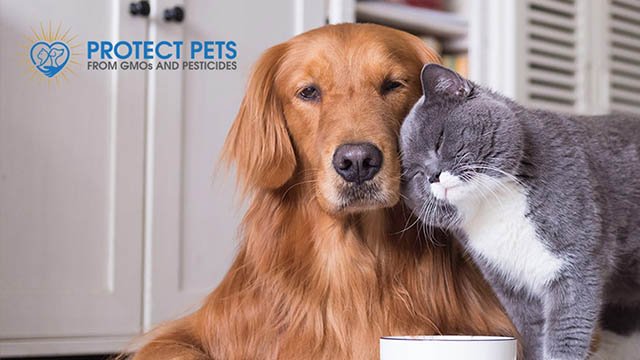According to a study conducted over a 6 year period at the Foster Hospital for Small Animals at Tufts University’s Cummings School of Veterinary Medicine, exposure to lawn pesticides, specifically those applied by professional lawn care companies, raised the risk of canine malignant lymphoma (CML) by as much as 70%
Dogs at highest risk for acquiring CML were over 50 pounds and living in homes where pesticides and herbicides were professionally applied, as well as homes where owners used lawn care products containing insect growth regulators, aka chemical killing agents.
Another study performed at the Department of Veterinary Clinical Sciences at Purdue University concluded certain garden and lawn chemicals are linked to canine bladder cancer, including common herbicides containing 2,4-dichlorophenoxyacetic acid (2,4-D), 4-chloro-2-methylphenoxypropionic acid (MCPP) and/or dicamba.
The dogs’ exposure to the chemicals occurred through ingestion, inhalation, and transdermally. Breeds with a genetic predisposition for bladder cancer, including Beagles, Scottish Terriers, Shetland Sheepdogs, West Highland White Terriers, and Wire Hair Fox Terriers are at particularly high risk.
The study showed that most of the dogs from homes using the chemicals had herbicides in their urine. Since some dogs from homes that did not use the products also had herbicides in their urine, researchers concluded the wind could carry the chemicals up to 50 ft from the site where they were applied.
We are just beginning to study the far-reaching harmful effects of the huge numbers of environmental chemicals that negatively impact all of our health.
Play it safe so your pet can stay safe.
The veterinary experts recommend the following:
- Do not apply chemical pesticides or herbicides to your yard, and if you use a lawn care service, do not allow them to use them. Also, be aware that a neighbor’s lawn chemicals can potentially contaminate your property and pose a risk to your pet.
- Avoid lawn care and other gardening products that contain insect growth regulators (IGRs). And be aware that the chemical pyriproxyfen, an IGR, is used in certain flea/tick spot-on treatments.
- Do not allow your pet access to any lawn unless you can confirm no pesticides or herbicides have been used.
- Increase the number of baths and foot rinses spring through fall when the chemical application is highest along public highways, parks, schools, streets, and public nature preserves.
- If you live in a townhouse or community that applies chemicals to common areas, detoxing a patch of grass in your backyard by watering the chemicals down into the soil to reduce skin contact after application.
- Keep your pet on a leash and on the sidewalk until you have walked to your pesticide-free destination, and consider a periodic detoxification protocol for your pet.



Why aren’t there any links to the studies? Why isn’t the link to dog food discussed? In my experience people buy the cheapest dog food on the shelf that is made of grains that are produced using tons of pesticides.